Common types of Yoga Part-2
Namaste,
Common Types of Yoga In our previous blog post, we learned about some common types of Yoga. In this blog post, we will take our topic forward and learn about some more important common types of Yoga. So without wasting time, let's start...
Common Types of Yoga
6: Power Yoga - The Energetic Boost
Energize your fitness routine with Power Yoga, a dynamic and vigorous form of yoga that combines the mindfulness of traditional yoga with the intensity of a high-energy workout. This fast-paced style is designed to build strength, increase stamina, and push your physical limits.
The Fast-Paced, Fitness-Oriented Approach of Power Yoga Power Yoga is a fitness-oriented version of Ashtanga Yoga, but with more flexibility in the sequence of poses. It’s characterized by its fast pace and the flow from one pose to another, which is maintained throughout the session. This approach not only keeps the body moving and the heart pumping but also sharpens mental focus as you transition smoothly between asanas.
Building Muscle and Improving Cardiovascular Health The continuous movement in Power Yoga provides a full-body workout that builds muscle and enhances cardiovascular health. Here are some of the physical benefits:
- Muscle Strength: Power Yoga’s weight-bearing poses engage multiple muscle groups, leading to increased muscle tone and strength.
- Cardiovascular Endurance: The fast pace and active sequences get the heart rate up, improving cardiovascular capacity and endurance.
- Flexibility: While building strength, Power Yoga also promotes flexibility through dynamic stretching.
- Balance and Stability: Many Power Yoga poses require balance, which helps improve overall stability and body awareness.
Why It’s Popular Among Athletes and Fitness Enthusiasts Athletes and fitness enthusiasts are drawn to Power Yoga for its ability to enhance athletic performance and aid in recovery. The practice complements other forms of exercise by improving flexibility, balance, and core strength. Additionally, the focus on breathwork and mindfulness can help reduce stress and improve mental clarity, making it a holistic addition to any fitness regimen.
Whether you’re looking to switch up your workout routine or integrate a more mindful approach to fitness, Power Yoga offers an energetic boost that will leave you feeling strong, centered, and invigorated. 🧘♂️💪🔥
Common Types of Yoga
7: Bikram Yoga - The Sweaty Challenge
Immerse yourself in the intense and steamy world of Bikram Yoga, a form of hot yoga that’s all about heat, sweat, and endurance. This challenging practice is known for its set sequence of 26 postures and two breathing exercises, all performed in a room heated to about 105°F (40°C) with 40% humidity.
The Concept of Hot Yoga and Its 26-Pose Sequence Bikram Yoga was developed by Bikram Choudhury and is typically conducted in a 90-minute class. The heat serves to warm up the body, allowing for deeper stretching and reducing the risk of injury. The 26 poses are designed to systematically work every part of the body, ensuring a comprehensive workout that stretches and strengthens muscles, ligaments, and joints.
The Detoxifying Effects of Practicing in a Heated Room Practicing yoga in a heated environment has several benefits:
- Enhanced Flexibility: The warmth helps to loosen tight muscles and increase flexibility.
- Detoxification: Sweating profusely is believed to help flush toxins from the skin.
- Improved Circulation: The heat can enhance blood flow to various parts of the body.
- Weight Loss: The high temperature can lead to increased calorie burn.
Health Considerations and Who It’s Best Suited For Bikram Yoga is best suited for those who are looking for a physically demanding practice and are comfortable with high temperatures. However, it’s important to consider the following health considerations:
- Hydration: It’s crucial to stay well-hydrated before, during, and after class to prevent dehydration.
- Medical Conditions: Individuals with certain health conditions, such as heart problems or low blood pressure, should consult a doctor before trying Bikram Yoga.
- Pregnancy: Pregnant women should seek medical advice and may need to avoid hot yoga due to the risks associated with overheating.
Bikram Yoga offers a sweaty challenge that can lead to improved health and vitality. If you’re up for the test and cleared by your healthcare provider, step into the hot room and let the transformative power of Bikram Yoga work its magic on your body and mind. 🧘♀️🔥💧
Common Types of Yoga
8: Vinyasa Yoga - The Fluid Movement
Immerse yourself in the graceful world of Vinyasa Yoga, a practice that embodies the fluidity of movement and the rhythm of breath. Vinyasa Yoga is a dynamic and creative form that offers a diverse and fulfilling experience for yogis of all levels.
The Creative Freedom of Vinyasa Yoga Sequences Vinyasa Yoga is often called “flow” yoga because of the smooth way the poses run together, much like a dance. The practice is known for its creative sequencing, which allows instructors and practitioners to craft sequences that vary from class to class, providing a unique and tailored experience each time. This freedom encourages exploration and personal expression within the framework of guided practice.
Linking Breath with Movement for a Meditative Flow At the heart of Vinyasa Yoga is the synchronization of breath with movement. Each transition between poses is guided by an inhale or an exhale, creating a meditative flow that can become a moving meditation. This focus on breath not only enhances the physical benefits of the asanas but also promotes mental clarity and emotional balance.
Suitable for All Levels Looking for Variety in Their Practice Whether you’re a beginner or an experienced practitioner, Vinyasa Yoga offers something for everyone. The adaptable nature of the sequences makes it easy to modify poses to suit individual needs and abilities. For those seeking variety, Vinyasa Yoga provides an ever-changing landscape of poses and sequences that keep the practice fresh, challenging, and exciting.
Dive into the fluid movement of Vinyasa Yoga and discover the harmony between your breath and your body. As you flow from one pose to the next, you’ll find strength, flexibility, and peace in the continuous dance of asanas. 🧘♀️💨✨
Common Types of Yoga
9: Prenatal Yoga - The Nurturing Path
Prenatal Yoga is a gentle way to maintain fitness and well-being during pregnancy. It’s specially tailored to the needs of expectant mothers, offering a nurturing path through each trimester and beyond.
Tailoring Yoga Practice for Expectant Mothers Prenatal Yoga focuses on poses that are safe and beneficial for pregnant women. It emphasizes breathing, stretching, and strengthening moves that support the changes a woman’s body undergoes during pregnancy. The practice is designed to be adaptable, allowing for modifications as the pregnancy progresses.
The Benefits for Pregnancy, Labor, and Postpartum Recovery Practicing Prenatal Yoga can offer numerous benefits throughout pregnancy and after childbirth:
- Improved Sleep: The relaxation techniques can help improve sleep quality.
- Reduced Stress: Yoga’s meditative aspects can help manage stress and anxiety.
- Increased Strength and Flexibility: Particularly in the hips, back, and pelvic floor muscles, which can be beneficial during childbirth.
- Decreased Lower Back Pain: Gentle stretching can alleviate back pain associated with pregnancy.
- Preparation for Labor: Breathing exercises can help prepare for the demands of labor.
- Faster Postpartum Recovery: The overall fitness maintained through yoga can lead to a quicker recovery after birth.
Safe Poses and Modifications for Each Trimester Prenatal Yoga classes typically include a variety of safe poses and modifications:
- First Trimester: Focus on standing poses to build strength and stamina.
- Second Trimester: Introduce gentle backbends and hip openers to accommodate the growing belly.
- Third Trimester: Emphasize relaxation and restorative poses to conserve energy and reduce swelling.
It’s important for expectant mothers to consult with their healthcare provider before starting any new exercise regimen, including Prenatal Yoga. With the right guidance, Prenatal Yoga can be a rewarding way to connect with your body and your baby during this special time. 🤰✨🧘♀️
Common Types of Yoga 10: Sivananda Yoga - The Holistic Approach
Discover the serene and balanced world of Sivananda Yoga, a form of yoga that emphasizes a holistic approach to well-being. Rooted in the teachings of Swami Sivananda, this practice is built on five foundational principles that promote physical health, mental clarity, and spiritual growth.
The Five Principles of Sivananda Yoga for Overall Well-Being Sivananda Yoga is based on the following five principles:
- Proper Exercise (Asanas): Encourages physical well-being through the practice of yoga postures.
- Proper Breathing (Pranayama): Enhances respiratory health and vital energy with breathing techniques.
- Proper Relaxation (Savasana): Aids in stress relief and rejuvenation by teaching the body and mind to release tension.
- Proper Diet (Vegetarian): Promotes a healthy and sattvic (pure) diet that nourishes the body and mind.
- Positive Thinking and Meditation (Vedanta and Dhyana): Cultivates a peaceful mind and a meditative state through positive thinking and meditation practices.
A Typical Class Structure and the 12 Basic Asanas A Sivananda Yoga class typically follows a set structure that includes relaxation, pranayama, sun salutations, and the 12 basic asanas, which are:
- Headstand (Sirsasana)
- Shoulderstand (Sarvangasana)
- Plough Pose (Halasana)
- Fish Pose (Matsyasana)
- Sitting Forward Bend (Paschimottanasana)
- Cobra Pose (Bhujangasana)
- Locust Pose (Salabhasana)
- Bow Pose (Dhanurasana)
- Spinal Twist (Ardha Matsyendrasana)
- Crow Pose (Kakasana) or Peacock Pose (Mayurasana)
- Standing Forward Bend (Pada Hasthasana)
- Triangle Pose (Trikonasana)
These asanas are designed to work synergistically to improve strength, flexibility, and balance while promoting inner peace and relaxation.
Emphasizing a Balanced Lifestyle and Positive Thinking Sivananda Yoga is not just a physical practice; it’s a way of life. It encourages practitioners to adopt a balanced lifestyle that includes a nutritious diet, regular exercise, adequate rest, and positive thinking. This comprehensive approach to yoga teaches that true well-being comes from harmony between the body, mind, and spirit.
By embracing the principles of Sivananda Yoga, you can embark on a transformative journey that nurtures your entire being. Whether you’re on the mat or off, this practice offers timeless wisdom for a healthy, happy, and harmonious life. 🧘♂️✨🕊️
Common Types of Yoga
11: Yin Yoga - The Subtle Stretch
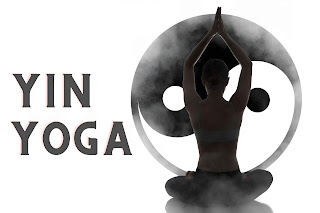 |
| Yin Yoga |
Enter the quiet world of Yin Yoga, a contemplative practice that allows you to turn inward and tune into both your mind and the subtle sensations in your body. Yin Yoga is a slow-paced style of yoga where poses are held for longer periods, typically three to five minutes or more, to target the deep connective tissues and facilitate deep tissue release.
The Slow-Paced Nature of Yin Yoga for Deep Tissue Release Unlike the more dynamic yoga practices that focus on warming up the muscles, Yin Yoga targets the deeper, less elastic parts of the body, such as the fascia, ligaments, and tendons. The slow nature of the practice provides time for a deeper release and relaxation of the body. It’s an invitation to slow down and stay present.
Holding Poses for Longer Periods to Target Connective Tissues In Yin Yoga, the extended time spent in each pose allows the body to relax and stretch at a deeper level, promoting flexibility and mobility. This time also offers a meditative experience, as the stillness of the body can lead to a stillness of the mind. The practice encourages mindfulness and provides an opportunity to observe and learn from the physical and emotional responses that arise during these periods of quiet and stillness.
Complementary to Dynamic Practices and Active Lifestyles Yin Yoga is the perfect complement to more dynamic forms of exercise, as it helps to balance the yang aspects of active lifestyles. For those who engage in high-energy activities, Yin Yoga offers a chance to restore and rejuvenate the body. It’s an essential practice for maintaining balance, both physically and mentally, and can help prevent overuse injuries that can occur from repetitive activities.
Yin Yoga is a beautiful practice for those looking to deepen their flexibility, cultivate inner peace, and enhance their overall well-being. It’s a gentle reminder that in our fast-paced world, there is profound power in stillness and subtlety. 🧘♀️🕊️✨
Common Types of Yoga
12: Restorative Yoga - The Gentle Healer
Discover the soothing embrace of Restorative Yoga, a practice designed to release tension and nurture the body and mind. Restorative Yoga is the perfect antidote to the stresses of modern life, offering a sanctuary of calm and tranquility.
The Restful Practice of Restorative Yoga for Relaxation Restorative Yoga is characterized by its slow pace and the use of props to support the body in passive stretches. Unlike more active yoga styles, Restorative Yoga focuses on relaxation and renewal. The poses are typically held for several minutes, allowing the practitioner to sink into deep relaxation and let go of all effort.
The Use of Props to Support the Body in Passive Stretches Props such as bolsters, blankets, blocks, and straps are used extensively in Restorative Yoga to create comfortable positions that can be maintained for longer periods. These props provide support to different parts of the body, enabling muscles to relax completely and the mind to settle into a state of peace.
Ideal for Stress Relief and Promoting Deep Relaxation Restorative Yoga is ideal for anyone seeking stress relief and deep relaxation. It’s particularly beneficial for those recovering from illness or injury, as well as individuals dealing with anxiety, depression, or chronic stress. The gentle nature of the practice makes it accessible to people of all ages and levels of fitness.
By incorporating Restorative Yoga into your routine, you can enjoy the following benefits:
- Reduced Stress and Anxiety: The calming effect of the practice can help lower stress and anxiety levels.
- Improved Sleep: The relaxation techniques can lead to better sleep quality.
- Enhanced Mood: The release of physical tension can also lead to the release of emotional tension, improving overall mood.
- Increased Mindfulness: The practice encourages present-moment awareness, enhancing mindfulness in daily life.
Embrace the gentle healing power of Restorative Yoga and allow yourself to unwind and recharge. In the stillness of the practice, you may find a deep sense of well-being that extends beyond the yoga mat. 🧘♀️🕊️✨
Conclusion: The Unity in Diversity of Yoga
As we conclude our exploration of the diverse world of yoga, we reflect on the unique qualities that each style brings to the mat. From the gentle flow of Hatha Yoga to the disciplined strength of Ashtanga Yoga, the awakening energy of Kundalini Yoga to the playful heights of Aerial Yoga, each practice offers a distinct experience.
We’ve seen how Iyengar Yoga emphasizes precision and alignment, while Power Yoga provides an energetic boost. Bikram Yoga challenges us with its heat, and Vinyasa Yoga enchants us with its fluid sequences. Prenatal Yoga nurtures expectant mothers, and Sivananda Yoga promotes a holistic lifestyle. Yin Yoga invites us to slow down, and Restorative Yoga provides a sanctuary for deep relaxation.
Despite the variety of practices, the essence of yoga remains the same—a journey of self-discovery, a path to inner peace, and a discipline that unites the body, mind, and spirit. Each style is a thread in the rich tapestry of yoga, woven together by the common goal of harmony and well-being.
We encourage you, our readers, to explore and experiment with these different practices. Find the style that resonates with you, the one that challenges you, and the one that brings you peace. Remember, the beauty of yoga lies in its adaptability and inclusivity—there is a practice for every body, every age, and every stage of life.
As you step off the mat and into the world, carry with you the lessons of yoga—the balance of Hatha, the focus of Ashtanga, the energy of Kundalini, and the serenity of Yin. Let these practices be your guide to a healthier, happier, and more harmonious life.
“Embrace the flow of life with the grace of yoga, and let your spirit soar to the rhythm of your breath. Namaste, the light in me honors the light in you.” 🌟🙏
Namaste. 🙏✨
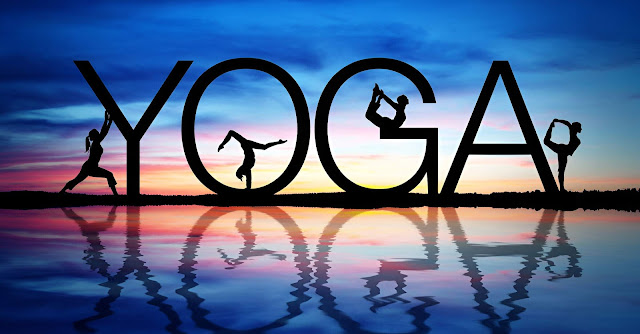



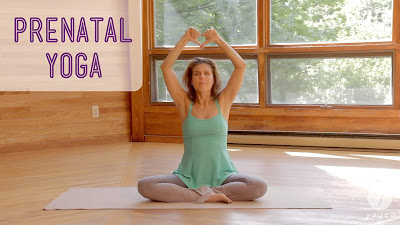
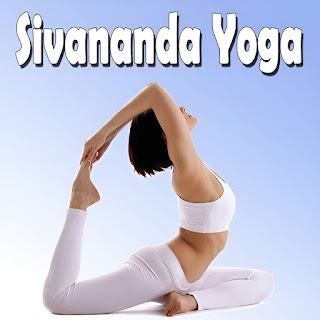

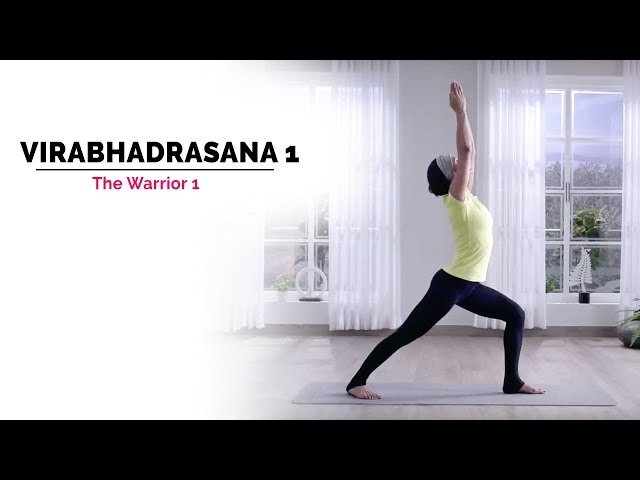



No comments:
Post a Comment